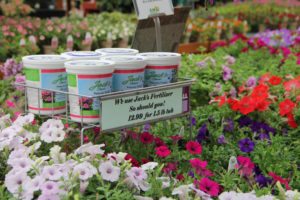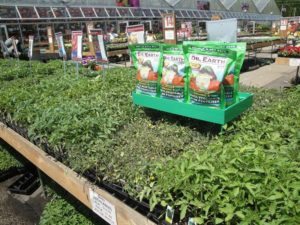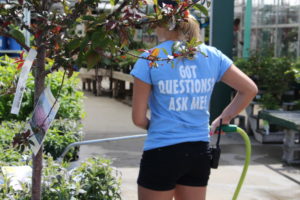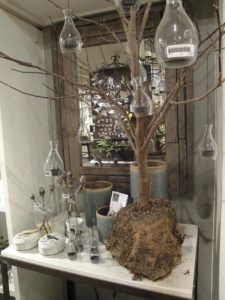The Good News
Extra, extra! Out with the old, in with the new: 2009 is over, and you have a fresh opportunity to keep current customers coming back and attract new shoppers for 2010. Here are a few ideas to get you started.
There’s nothing like a brand new year to kick start plans for fresh ways to make your business a success. And while we all have traveled over plenty of rocky roads in 2009, I’m a big believer in finding ways to steer clear of the potholes and focus on the opportunities that lie ahead. Here’s my view of the road map for 2010.
Optimism
At the start of a new year, people are looking for ways to be inspired and are drawn to businesses that look successful and offer innovative ideas to help them solve problems and add value to their homes. So the first place to start in 2010 is with your own attitude. It’s important to stay upbeat and optimistic in your approach to customers so they view your company as a solutions-based service. This can be as simple as greeting customers as they come in and asking them how you can help. Listen to what they need and provide information and ideas to give them what they are looking for. Even if you aren’t carrying the product they need, be ready with more than, “Sorry, we don’t have that”: Offer alternatives and fresh ideas that demonstrate that you are there to help. Make every customer feel significant.
Promote Yourself
Along with great customer service for those who come to your store, you also need to find ways to attract attention to the services you provide and the products you sell. Be bold, and put the spotlight on your business by getting the word out about what you are doing. Choose at least one project in the upcoming year that you want to highlight and be sure that people know about it. This might be a public service project, a prominent design that is featured in the media or a cooperative project with a high-profile person or organization. Think about ways to get your name in front of potential customers so they see you as a leader in the community. Whatever project you choose, put as much effort in promoting it as you do working on the job.
Show Customers Unique Benefits
For many people, tighter budgets are causing them to spend less, and in the process, they are re-evaluating what’s essential to buy. Even for those who are not struggling, the idea of searching for a better deal has almost become a sport. Either way, people are looking for sales and lower prices or at least more value for their investment. If you have been in business for a while, you know this trend will most likely continue to affect buying habits in 2010.
Because gardening is an investment of time and money, consumers need to see real value in purchasing products and services from your business. Help them by demonstrating all the many ways that gardening saves them money and adds value to their lives. For those interested in cutting their grocery bills, show how much money can be saved by growing their own food. Let people know that perennials are a great buy because the plants come back year after year without replanting. Let them know that a well-landscaped home attracts more potential buyers and sells for more than homes that lack curb appeal. Show them how they can increase their home’s living space for a fraction of the cost of building a new room by adding patios, decks and terraces. In every way possible, illustrate how buying from you will save them money.
Adopt New Strategies
Another force that is changing buyers’ habits is the Internet. Consider how much information and entertainment people are getting from this source and how much of it is free. This is altering people’s perceptions of what was known as the “contract” model. If you have been a member of a health club, owned a cell phone or subscribed to a magazine or newspaper, then you know how this model works. The idea is to get customers and keep them for as long as possible by having them commit to a period of time. The problem with contracts in today’s economy is that people are wary of getting locked in and they are also used to getting things “risk free” or on trial with a plan that allows them to opt out at any time.
I completely understand the need for annual contracts in my own landscaping business, but I recognize that without offering some flexibility, I may be shutting the door on some potential customers. So consider finding some middle ground with your customers so they will continue to use your services.
Focus on Your Margins
That brings me to another way to add flexibility to your business. Instead of being concerned about keeping a contract, look for ways to maintain your profit margins in your landscape designs. Here’s an example of what I mean. Some of my customers needed to cut back in the number of times their flower beds were replanted through the growing season. By substituting plants that have a short blooming cycle with ones that hold up, spread quickly and bloom for longer periods of time, I can offer customers some cost-saving alternatives. To give them an idea of what I have in mind, I was ready with planting plans and photos to show them. This helps me to keep them as customers, but reduces my expenses in plant material and labor, keeping my profit margin on the contract about the same. This is a win-win solution for both of us.
Keep It Green
One trend that seems to have weathered the economic storm is the continued interest in green products. Recent reports indicate that people are buying organic and energy-efficient products even when they cost more than standard items. Sustainable landscapes, water conservation, perennials and “double-duty” shrubs that look good in the landscape and produce edible berries are popular. Gardening with native plants that attract needed pollinators and provide birds with food and shelter continue to be of interest. Consumers are looking for plants that are easy-care, have great color, and are pest and drought resistant. Demand is up for sustainable varieties that provide great impact with little fuss. And when it comes to fertilizers and pest control, consumers are looking for more organic based products that are safe to use around pets and animals. Providing these in-demand products makes good business sense.
Encourage the People – Plant Connection
There’s no doubt that there are plenty of distractions these days, particularly for the younger generation. And there are many people who don’t even have the gardening experience to know which end of a bulb goes up. So it’s more important than ever to meet them where they are and entice them into the world of gardening. They need eye-catching, fun and easy ways to enhance the places where they live and work.
Instant gardens are something that many people are wanting these days, and this is where container gardening can offer an “entry-level” gardening experience. Container gardens bring color and interest up close and personal because they can be placed on a porch, patio, deck or near the front door. They are also fun ways to experiment with plants to build confidence in novice gardeners. Spring and summer flower bulbs are also great ways to offer people a low-risk way to start gardening. And don’t forget houseplants as a great way to begin developing green thumbs. Eye-catching bromeliads and orchids, and other types of flowering houseplants are popular. Remind customers that houseplants are a better value than cut flowers when it comes to lasting impressions.
Baby boomers will continue to be a valuable customer base: In their retirement, some are returning to a simpler life of cooking, gardening and even raising chickens. Empty nesters often desire to expand their gardens. Many are looking for fresh twists on traditional gardening ideas, such as mixing vegetable and herb gardens with ornamentals, such as roses with tomatoes, beds edged with herbs, and ornamental veggies used for their beautiful fruits and foliage. Produce sharing with community-supported agricultural farms and produce exchanges are appearing in urban, suburban and rural communities.
We’re in This Together
Perhaps one of the biggest challenges we face is how to start thinking as an industry instead of one faction against another. To keep customers coming, it’s really us versus video games, computers and the many other ways people could spend their time rather than gardening. So our real job in 2010 is to offer people more value and satisfaction in return for their investment in our industry. If together, we can get people excited about their gardens, if we can inspire them with ideas and show them how affordable and easy it can be, we all win.


















 Videos
Videos





